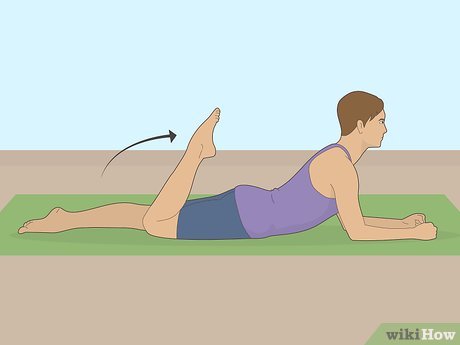To increase stamina for running, focus on consistency and proper training. It’s about building endurance over time with the right methods.
Running is a fantastic way to stay fit and healthy. It boosts your mood and keeps your heart strong. But, running long distances can be tough if you lack stamina. Stamina helps you run further and faster without feeling too tired.
Improving your stamina is not just for athletes; anyone can do it. Whether you are preparing for your first 5k or aiming to improve your daily jog, building stamina is key. This blog will guide you on how to increase your running stamina effectively. Follow these tips and see progress in your running journey. Let’s get started!
Benefits Of Improved Stamina
Improved stamina offers many benefits for runners. It boosts performance, enhances endurance, and supports overall health. Understanding these benefits can help motivate you to work on increasing your stamina. Let’s explore some key advantages.
Enhanced Performance
Improved stamina means you can run faster and longer. You will feel less tired during your runs. Your body will adapt to higher intensity workouts. This can lead to personal bests and achieving new goals. Your muscles will get more oxygen, improving their efficiency.
Better Endurance
Increased stamina strengthens your cardiovascular system. Your heart and lungs become more efficient. This allows you to run longer distances without fatigue. You will recover faster after each run. Your overall energy levels will improve. Daily activities will feel easier and less tiring.

Credit: www.wikihow.com
Setting Realistic Goals
Setting realistic goals is crucial for increasing stamina for running. Clear, attainable goals keep you motivated and on track. They help you measure progress and celebrate achievements. Both short-term and long-term goals play a vital role. Let’s explore them.
Short-term Targets
Short-term targets are your stepping stones. They should be specific and measurable. For example, aim to run for 10 minutes without stopping. Another target could be to run three times a week. These small wins build confidence. They also make running a habit. Focus on consistency over speed.
Long-term Objectives
Long-term objectives are your ultimate milestones. They require more time and effort. Examples include running a 5K or increasing your running distance to 10 miles. These goals push you to maintain your training. They also give you a bigger picture to work towards. Break them into smaller tasks to avoid feeling overwhelmed. This approach ensures steady progress.
Incorporating Interval Training
Incorporating interval training into your running routine can significantly boost your stamina. Interval training involves alternating between high-intensity bursts and recovery periods. This method helps you run longer distances and improve your overall speed.
High-intensity Intervals
High-intensity intervals are short bursts of running at your maximum effort. These bursts are usually between 30 seconds to 2 minutes. Start with shorter intervals and gradually increase the duration. High-intensity intervals push your cardiovascular system. They improve your heart’s efficiency and muscle strength.
Recovery Periods
Recovery periods are crucial for effective interval training. These periods allow your body to recuperate after high-intensity bursts. Recovery periods can include light jogging or walking. Aim to keep them twice the duration of your high-intensity intervals. For example, if you run fast for one minute, recover for two minutes. Gradually decrease recovery time as your stamina improves.
Strength Training Essentials
Strength training is crucial for runners. It helps build muscle and boosts endurance. It also reduces injury risk.
Adding strength training to your routine can improve your running performance. Focus on exercises targeting your core and legs. This will provide the stability and power needed for longer runs.
Core Exercises
A strong core supports better posture while running. It helps maintain form and reduces fatigue. Consider these exercises:
Planks: Hold a plank position for 30 seconds. Gradually increase the time as you get stronger.
Bicycle crunches: Lie on your back. Bring one knee to the opposite elbow. Alternate sides in a pedaling motion.
Russian twists: Sit on the floor with knees bent. Lean back slightly and twist your torso from side to side.
Leg Workouts
Leg strength is vital for runners. Strong legs can help you run faster and longer. Here are some effective exercises:
Squats: Stand with feet shoulder-width apart. Lower your body as if sitting in a chair. Return to standing position.
Lunges: Step forward with one leg. Lower your body until both knees are bent at 90 degrees. Push back to the starting position and switch legs.
Calf raises: Stand with feet hip-width apart. Raise your heels off the ground. Lower them back down slowly.
Incorporate these exercises into your weekly routine. Gradually increase the intensity and duration. Consistent practice will lead to improved stamina and better running performance.
Diet And Nutrition Tips
Running requires a lot of energy and stamina. To build and maintain your stamina, it’s important to focus on your diet and nutrition. This section will provide you with useful tips on how to fuel your body for running. By following these tips, you can improve your endurance and overall performance.
Balanced Meals
Eating balanced meals is crucial for runners. Your meals should include a mix of carbohydrates, proteins, and fats. Carbohydrates are your body’s main source of energy. Choose complex carbs like whole grains, vegetables, and fruits.
Protein helps repair and build muscles. Include lean protein sources such as chicken, fish, beans, and tofu. Healthy fats are also important. They provide long-lasting energy. Opt for sources like avocados, nuts, and olive oil.
| Food Group | Examples |
|---|---|
| Carbohydrates | Whole grains, vegetables, fruits |
| Protein | Chicken, fish, beans, tofu |
| Fats | Avocados, nuts, olive oil |
Hydration Importance
Hydration is key to maintaining stamina. Your body needs water to function well. Drink water before, during, and after your runs. Dehydration can lead to fatigue and poor performance.
Electrolytes are also important. They help maintain your body’s fluid balance. Consider drinks with electrolytes, especially for long runs. Avoid sugary drinks and alcohol, as they can cause dehydration.
- Drink water regularly
- Consider electrolyte drinks
- Avoid sugary drinks
- Avoid alcohol
By eating balanced meals and staying hydrated, you can increase your running stamina. Focus on the right nutrients and keep your body well-hydrated. This will help you run longer and stronger.

Credit: de.pinterest.com
Proper Rest And Recovery
Proper rest and recovery are vital for increasing stamina for running. They help your body repair and strengthen after workouts. Without adequate rest, your performance can suffer. Focusing on sleep quality and active rest days will significantly improve your stamina.
Sleep Quality
Quality sleep is essential for recovery. Aim for 7 to 9 hours of sleep each night. Deep sleep stages help your muscles repair. A consistent sleep schedule improves sleep quality. Avoid screens before bed to sleep better. Create a calm bedtime routine to help you relax.
Active Rest Days
Active rest days are crucial for maintaining stamina. These days allow your body to recover without total inactivity. Engage in light activities like walking or yoga. These activities promote blood flow and muscle repair. Avoid intense workouts on rest days to prevent burnout.
Mental Strategies
Running isn’t just about physical endurance. It’s also about mental strength. Your mind can be your biggest ally or your toughest opponent. Mental strategies can help you push through tough runs and keep going when your body wants to quit. Let’s dive into some effective mental strategies.
Positive Mindset
Maintaining a positive mindset can make a huge difference. Believe in yourself. Trust your training. If you think you can, you’re halfway there. Here are some tips:
- Set small, achievable goals. Celebrate each win.
- Replace negative thoughts with positive affirmations. Tell yourself, “I can do this.”
- Surround yourself with positive influences. Run with a friend or join a running group.
Visualization Techniques
Visualization can boost your performance. Picture yourself crossing the finish line. Imagine the cheering crowd. Feel the sense of accomplishment. Here’s how you can use visualization techniques:
- Find a quiet place. Close your eyes and take deep breaths.
- Visualize the entire run. Start to finish. See every detail.
- Feel the emotions. Excitement, determination, joy. Let them fuel you.
Use these mental strategies to enhance your running stamina. Your mind can be a powerful tool in your running journey. Keep it positive and focused.
Tracking Progress
Tracking your progress is essential for increasing stamina for running. It helps you stay motivated and see how far you’ve come. There are different ways to track your progress, including using fitness apps and journaling achievements.
Using Fitness Apps
Fitness apps are a great way to track your running progress. They offer features like GPS tracking, heart rate monitoring, and personalized training plans. Here are some benefits of using fitness apps:
- Real-time data: See your pace, distance, and time instantly.
- Goal setting: Set and track your running goals.
- Community support: Join groups and share your achievements.
Popular fitness apps include:
| App Name | Key Features |
|---|---|
| Strava | GPS tracking, social network, challenges |
| Runkeeper | Personalized plans, audio cues, progress insights |
| MapMyRun | Route planning, nutrition tracking, workout library |
Journaling Achievements
Journaling your achievements is another effective way to track progress. It allows you to reflect on your runs and identify areas for improvement. Here’s how to start journaling:
- Choose a journal: Use a notebook or a digital app.
- Record details: Write down distance, pace, and how you felt.
- Set goals: Note your goals and track your progress toward them.
Benefits of journaling your running achievements include:
- Motivation: Seeing progress boosts your motivation.
- Insight: Understand what works best for you.
- Accountability: Stay accountable to your running routine.
Combine fitness apps and journaling for the best results. This dual approach helps you stay on track and continuously improve your stamina.

Credit: mx.pinterest.com
Frequently Asked Questions
How Can I Build Running Stamina?
Building running stamina requires consistent training, gradual increase in mileage, and proper rest. Incorporate interval training, strength exercises, and a balanced diet to improve endurance.
What Foods Help Increase Stamina For Running?
Foods rich in complex carbohydrates, proteins, and healthy fats boost stamina. Include whole grains, lean meats, nuts, fruits, and vegetables in your diet for better energy levels.
How Often Should I Run To Build Stamina?
To build stamina, run at least three to four times a week. Ensure you include rest days and cross-training for optimal performance and recovery.
Can Strength Training Help Improve Running Stamina?
Yes, strength training enhances muscle endurance and reduces fatigue. Focus on core, leg, and overall body strength exercises to support your running routine.
Conclusion
Building stamina takes time and effort. Stay consistent with your training. Focus on a balanced diet and proper hydration. Rest is crucial for recovery and growth. Listen to your body to avoid injuries. Mix up your routines to keep things interesting.
Celebrate small victories and stay motivated. With patience and dedication, you’ll see progress. Enjoy your running journey.



